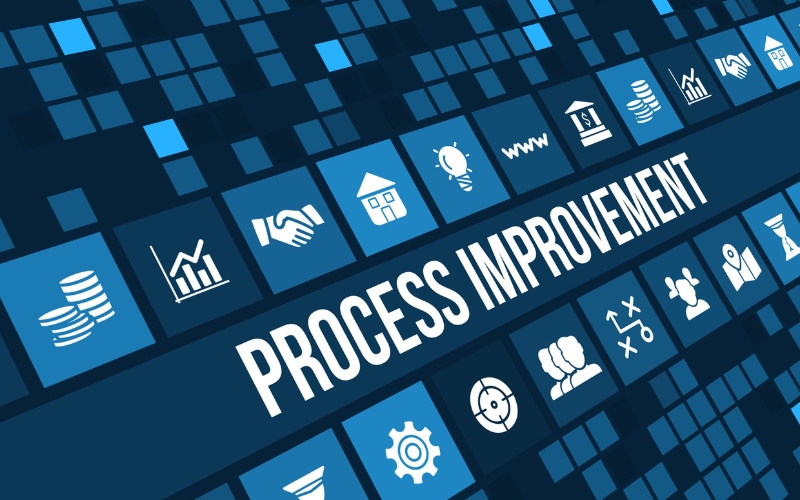In today’s digital landscape, ensuring that websites are accessible to all users is not just a best practice but a necessity. Web accessibility refers to designing websites and web applications that are usable by everyone, including individuals with disabilities. Adhering to accessibility standards such as the Web Content Accessibility Guidelines (WCAG) and the Americans with Disabilities Act (ADA) is essential for creating an inclusive online experience. Implementing practical accessibility features, such as alt text for images, keyboard navigation, and proper color contrast, ensures that your website is navigable by users with various disabilities. However, it’s not enough to simply implement these features; regular testing and ongoing maintenance are crucial to keeping the website accessible as content and technology evolve. In this article, we will explore the importance of web accessibility, offer practical tips for implementation, and discuss how to effectively test and maintain your website’s accessibility.
Understanding Web Accessibility Standards and Guidelines

Web accessibility refers to the practice of designing websites and web applications that are usable by all individuals, regardless of their abilities or disabilities. The aim is to create an inclusive digital environment where everyone, including people with disabilities, can access content, interact with services, and navigate the web effectively. Two key sets of guidelines that play a significant role in ensuring web accessibility are the Web Content Accessibility Guidelines (WCAG) and the Americans with Disabilities Act (ADA). Understanding these standards is essential for creating a website that caters to all users, ensuring equal access to information and services.
Web Content Accessibility Guidelines (WCAG)
The WCAG is a comprehensive set of guidelines created by the World Wide Web Consortium (W3C), the primary international standards organization for the web. The guidelines were developed to help web developers design and develop accessible web content. The WCAG focuses on making web content more accessible to people with various disabilities, such as visual, auditory, motor, and cognitive impairments.
The guidelines are organized into four principles, known as POUR: Perceivable, Operable, Understandable, and Robust. These principles break down how websites should be designed to be accessible:
- Perceivable: Information and user interface components must be presented in ways that users can perceive. For example, text alternatives (alt text) should be provided for non-text content like images so that it can be interpreted by screen readers. Similarly, audio content should have captions or transcripts for those with hearing impairments.
- Operable: The user interface and navigation must be operable by all users, regardless of their abilities. This means ensuring that all functions can be accessed using a keyboard, as some users may not be able to use a mouse. Links, buttons, and forms should be clearly identifiable and easy to navigate.
- Understandable: Websites should be easy to understand and use. This involves clear, simple language and well-structured content. Providing predictable navigation and consistent layouts enhances usability for everyone, especially people with cognitive disabilities.
- Robust: Content must be compatible with a wide variety of user agents, including assistive technologies such as screen readers, and future-proof to ensure compatibility with evolving web standards.
These guidelines are updated periodically, with WCAG 2.1 being the latest version as of 2018. Adhering to WCAG standards ensures that websites are accessible to a broad spectrum of users.
Americans with Disabilities Act (ADA)
The Americans with Disabilities Act (ADA) is a landmark civil rights law in the United States that prohibits discrimination against individuals with disabilities in all areas of public life, including education, employment, and transportation. In the context of the web, the ADA mandates that websites be accessible to people with disabilities. Though the ADA does not specify technical guidelines for web accessibility, it has been interpreted by courts to apply to digital spaces, which includes websites.
For businesses and organizations, this means that failure to provide an accessible website could lead to legal consequences. The ADA requires that websites, especially those of public entities and businesses, provide equal access to services, information, and products for individuals with disabilities. Many companies are now being sued over website accessibility issues, highlighting the growing need to comply with the ADA’s accessibility provisions.
The Importance of Compliance
Complying with WCAG and ADA standards is not only essential for legal reasons but also for ethical and business considerations. Accessibility ensures that no one is exclud ed from using the internet, allowing businesses to reach a broader audience. Additionally, search engines like Google prioritize accessible websites, meaning improving your site’s accessibility can lead to better SEO performance.
ed from using the internet, allowing businesses to reach a broader audience. Additionally, search engines like Google prioritize accessible websites, meaning improving your site’s accessibility can lead to better SEO performance.
In conclusion, understanding and applying the WCAG and ADA guidelines is crucial for developing an accessible website that serves all users, regardless of their abilities. By adhering to these standards, you not only avoid legal and ethical issues but also contribute to a more inclusive and user-friendly web experience.
Practical Tips for Implementing Accessibility Features
Implementing web accessibility features is crucial for ensuring that all users, including those with disabilities, can navigate and interact with your website seamlessly. There are several practical tools and practices that web developers can employ to make their websites more inclusive. Here are some of the most effective methods to enhance accessibility:
1. Text-to-Speech Functionality
Text-to-speech (TTS) functionality is essential for individuals with visual impairments or reading disabilities. This tool allows text on the web page to be read aloud by software, ensuring that content is accessible to users who are blind or have low vision.
To implement TTS, web developers can integrate screen reader software such as JAWS (Job Access With Speech), NVDA (NonVisual Desktop Access), or VoiceOver (built into macOS and iOS). These tools convert text into speech, allowing users to experience web content audibly.
Moreover, it’s important to ensure that content is structured with proper semantic HTML, using headings, lists, and paragraphs. This allows screen readers to interpret and deliver the content in an organized, coherent manner.
2. Alt Text for Images
Alt text (alternative text) is an essential accessibility feature for web images. It provides a textual description of an image, which can be read by screen readers for users who are visually impaired. For example, if an image shows a person running, the alt text might read, “A person running in a park on a sunny day.”
To implement effective alt text:
- Keep it concise but descriptive.
- Avoid phrases like “image of” or “picture of,” as screen readers already know it’s an image.
- Ensure all meaningful images (like logos, icons, and photographs) have descriptive alt text.
- For decorative images that do not add meaningful content, use empty alt attributes (
alt="") so that screen readers can skip over them.
By adding accurate alt text, you ensure that visually impaired users can understand and engage with your content more easily.
3. Keyboard Navigation
Not all users can interact with a website using a mouse. Those with motor impairments may rely on keyboard shortcuts to navigate. Therefore, ensuring that all website functions are accessible through keyboard navigation is crucial.
Here are some ways to improve keyboard navigation:
- Tab Indexing: Use proper HTML to ensure that users can navigate between form fields, buttons, and links using the “Tab” key. Make sure that the tab order is logical and follows the visual flow of the page.
- Skip Navigation Links: Provide a “skip to content” link at the top of the page, allowing users to bypass repetitive navigation links.
- Focusable Elements: Ensure that all interactive elements (like forms, buttons, and links) are focusable and that the focus state is visually clear. Use the
:focusCSS pseudo-class to highlight elements that are in focus.
By making keyboard navigation intuitive and comprehensive, you empower users who may not be able to use a mouse.
4. Color Contrast Considerations
Color contrast is essential for users with low vision or color blindness. Insufficient contrast between text and background can make it difficult for users to read content.
To improve color contrast:
- Follow the WCAG guidelines, which recommend a contrast ratio of at least 4.5:1 for normal text and 3:1 for large text.
- Use online contrast checkers like the WebAIM Color Contrast Checker to test and ensure that your website meets the recommended contrast ratios.
- Avoid using color as the sole method of conveying information. For example, use icons or text labels in addition to color to indicate status (e.g., red for errors).
Good color contrast not only benefits users with visual impairments but also enhances readability for all users, particularly in different lighting conditions.
5. Captions and Transcripts for Multimedia Content
For users who are deaf or hard of hearing, captions and transcripts for videos and audio files are vital. Adding captions ensures that users can follow the spoken content and any relevant sounds, while transcripts provide a complete text version of the audio.
To implement this feature:
- Use video players that support closed captions, like YouTube, which automatically generates captions (though manual adjustments may be necessary for accuracy).
- Provide a downloadable transcript for podcasts or other audio content.
- Ensure that the captions are synchronized with the video to reflect the audio accurately.
By offering captions and transcripts, you make multimedia content accessible to a wider audience, improving the overall user experience.
Conclusion
Implementing these accessibility features not only helps people with disabilities but also improves the overall usability of your website. Accessibility is an ongoing process that involves continuous testing and adjustments. By utilizing tools such as text-to-speech functionality, alt text for images, keyboard navigation, color contrast considerations, and captions for multimedia, you can ensure your website is accessible to all users, providing a more inclusive and user-friendly digital experience.
Testing and Maintaining Website Accessibility

Ensuring your website is accessible to all users, including those with disabilities, is not a one-time task but an ongoing process. Regular testing and maintenance are critical to ensuring that your website remains accessible over time, especially as content and technology evolve. Here’s how you can effectively test your website’s accessibility and maintain it.
1. Using Screen Readers for Accessibility Testing
Screen readers are essential tools for testing accessibility for users who are visually impaired. These tools convert text-based content on a website into speech, allowing blind and low-vision users to interact with the site. Popular screen readers include JAWS (Job Access With Speech), NVDA (NonVisual Desktop Access), and VoiceOver (for macOS and iOS). Testing your website with a screen reader helps ensure that your content is readable, navigable, and functional for users who rely on them.
When testing with a screen reader, focus on the following aspects:
- Alt Text for Images: Ensure that all meaningful images have descriptive alt text. Decorative images should have empty alt attributes (
alt=""), allowing screen readers to skip them. - Headings and Structure: Verify that headings are correctly ordered (H1, H2, etc.), as this helps screen readers to structure the content and navigate efficiently.
- Forms and Links: Test whether form labels are read aloud properly and if links are clear and descriptive.
Running your website through a screen reader ensures that it delivers a user-friendly experience for people with visual disabilities.
2. Conducting Accessibility Audits
An accessibility audit is a comprehensive review of your website to identify potential accessibility issues. Tools like WAVE (Web Accessibility Evaluation Tool), Lighthouse, and Axe can automate the auditing process by scanning your website and providing reports on its compliance with accessibility standards like WCAG (Web Content Accessibility Guidelines).
During an audit, these tools typically check for common accessibility issues such as:
- Missing or improper alt text for images
- Insufficient color contrast between text and background
- Improper HTML elements or missing ARIA (Accessible Rich Internet Applications) attributes
- Keyboard navigation issues
- Forms without proper labels
An audit is valuable in detecting hidden issues that may not be immediately obvious to the human eye but could impede access for certain users. It provides a systematic approach to finding and fixing accessibility barriers.
3. User Feedback
While automated tools are excellent for detecting technical issues, they often miss the human element of accessibility. User feedback is one of the most reliable ways to identify and address accessibility concerns. Encourage users, particularly those with disabilities, to report problems they encounter while navigating your website. You can collect feedback through:
- Surveys and Feedback Forms: Provide a direct way for users to report any accessibility issues they face.
- User Testing: Invite people with disabilities to test your website and share their experiences. This can reveal usability concerns that automated tools may overlook.
- Customer Support Channels: Monitor customer queries related to accessibility, such as difficulty reading content or navigating forms.
Listening to your users ensures that the website evolves to meet their needs and improves accessibility in real-world scenarios.
4. Ongoing Maintenance
Accessibility is an ongoing commitment, not a one-time task. As your website evolves—whether you add new content, implement design changes, or update functionality—you must continuously test for accessibility to ensure that it remains compliant.
Here are key strategies for maintaining website accessibility:
- Regular Audits: Schedule periodic accessibility audits to check for compliance with evolving standards like WCAG 2.1 and new guidelines.
- Update Content and Features: When adding new content or interactive features (like forms or multimedia), ensure that they follow accessibility guidelines.
- Stay Updated on Guidelines: Keep track of updates to accessibility standards and best practices. As new technologies emerge, accessibility guidelines may evolve, and you’ll want to stay compliant.
5. Incorporating Accessibility into Development Processes
The best way to ensure continuous accessibility is to integrate it into your development process from the start. Encourage your design and development teams to prioritize accessibility during the planning phase of website projects. This includes:
- Inclusive Design Practices: Ensure that accessibility is a core consideration when designing the user interface (UI) and user experience (UX).
- Automated Accessibility Checks in CI/CD Pipelines: Integrate accessibility testing tools into your development pipeline to automatically detect issues before the site is launched or updated.
Conclusion
Testing and maintaining website accessibility is a vital, ongoing process that ensures your site remains usable for everyone. By using screen readers, conducting regular accessibility audits, collecting user feedback, and implementing ongoing maintenance practices, you can create an inclusive and accessible web experience. Ensuring accessibility is not just about meeting legal requirements but about providing equal access to all users, enhancing their experience, and fostering a more inclusive online environment.
Conclusion
In conclusion, making your website accessible to all users is a continuous commitment that enhances the user experience, fosters inclusivity, and ensures compliance with legal standards. By adhering to web accessibility guidelines like WCAG and ADA, and by implementing features such as text-to-speech tools, alt text, and keyboard navigation, you can create a website that meets the needs of all individuals. Regular testing through tools like screen readers and accessibility audits, alongside ongoing user feedback and maintenance, will help you identify and resolve potential barriers, ensuring that your website remains accessible in the long term. Ultimately, accessible websites provide greater opportunities for user engagement, making the web a more inclusive space for everyone.

